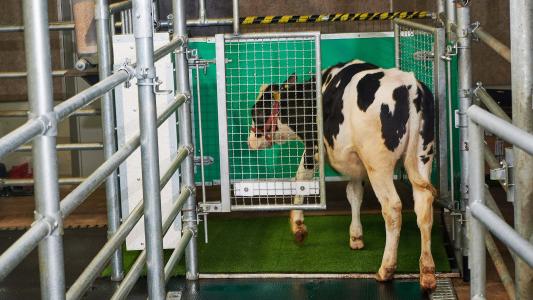A Japanese startup is selling a gene-edited fish that grows up to 60% more muscle on the same amount of food — and it hopes the meaty seafood could be a lifesaver for the nation’s struggling aquaculture industry.
The challenge: Fishing plays an important role in Japan’s economy and food supply, but overfishing and climate change have caused wild populations of many popular fish to plummet.
Farm-raised fish can fill in for the wild-caught kind, but Japan’s aquaculture industry has been on the decline, as aging fishers retire and younger people choose to look elsewhere for work.
About 60% to 70% of fish farmers’ costs goes toward feed.
Japan’s gene-edited fish: Making aquaculture more lucrative could save the industry, and one way to do that is to make it more productive, growing more food with less feed. Right now, 60% to 70% of fish farmers’ costs goes toward feed, according to Japan’s Fisheries Agency.
So Japanese scientists used the gene-editing tool CRISPR to alter a type of fish — the red seabream — to grow up to 60% more edible muscle from the same amount of feed.
How it works: To create the gene-edited fish, researchers at Kyoto University and Kindai University knocked out a gene that restricts muscle growth, myostatin, in fertilized fish eggs.
To ensure the gene-edited fish don’t breed with wild populations, they were confined to tanks.
Some of the eggs started dividing before fully incorporating the edit, leading to the creation of fish with a mix of edited and unedited cells. By breeding those fish together, the scientists were able to select offspring with only edited cells.
Without the myostatin gene to restrict their muscle growth, the fish grew meatier, developing 20% to 60% more muscle without an increase in feed. To ensure the gene-edited fish don’t breed with wild populations, they were confined to tanks.
The startup: On September 17, a Japanese health ministry panel ruled that, because the researchers didn’t add any new genes to the fish — they just knocked one out — it didn’t need to undergo the extensive safety screening required for genetically modified foods.
That same day, Japanese startup Regional Fish said it was accepting orders for the gene-edited fish through the crowdfunding platform Campfire.
Regional is offering backers several fish dish options, with shipping slated for October or November. If they don’t want seafood, they can purchase an online course in genome editing, a tour of Regional’s aquaculture facility, or a “genome editing experience tour” at Kyoto University.
Less than six hours after launching the campaign, the company hit its funding target.
Looking ahead: Regional’s CEO Tadanori Umekawa told reporters that the company will use feedback from the crowdfunding campaign’s backers to help it plan commercial sales of the gene-edited fish.
Umekawa also said that the company is exploring ways to use gene editing to create fish suitable for different regions of Japan in the hopes of revitalizing the aquaculture industry — meaning the red seabream might just be the first of many CRISPR’d fish.
We’d love to hear from you! If you have a comment about this article or if you have a tip for a future Freethink story, please email us at tips@freethink.com.
